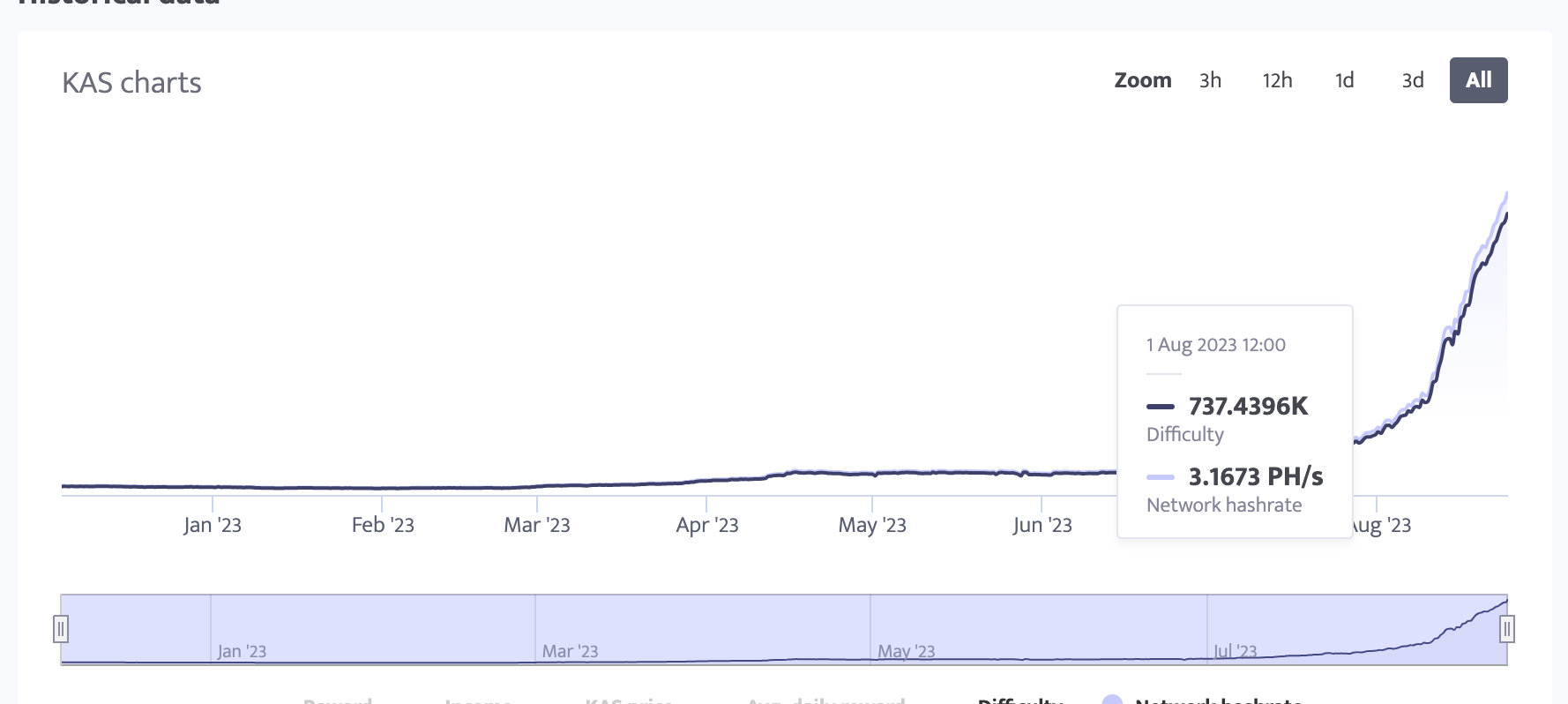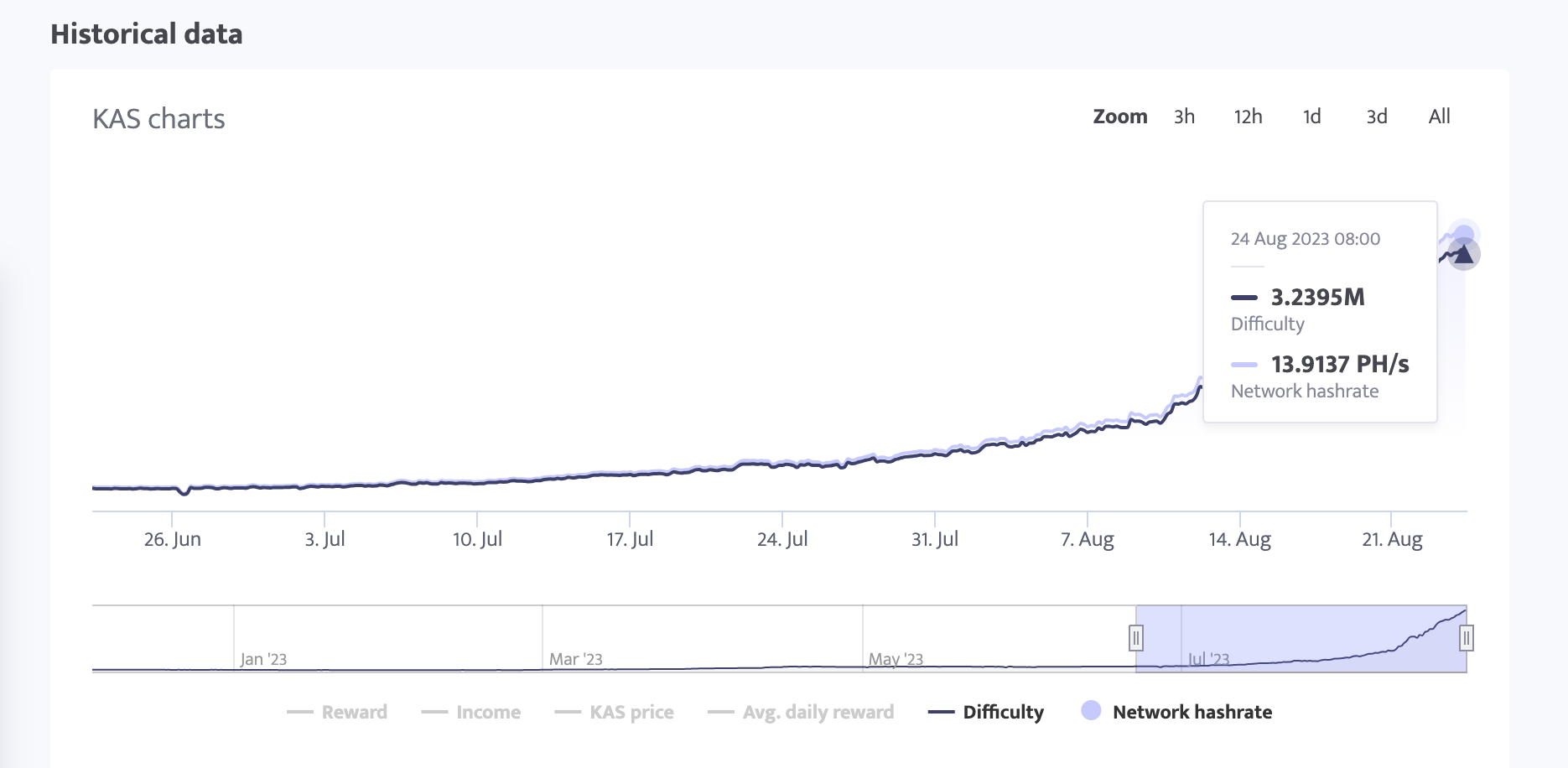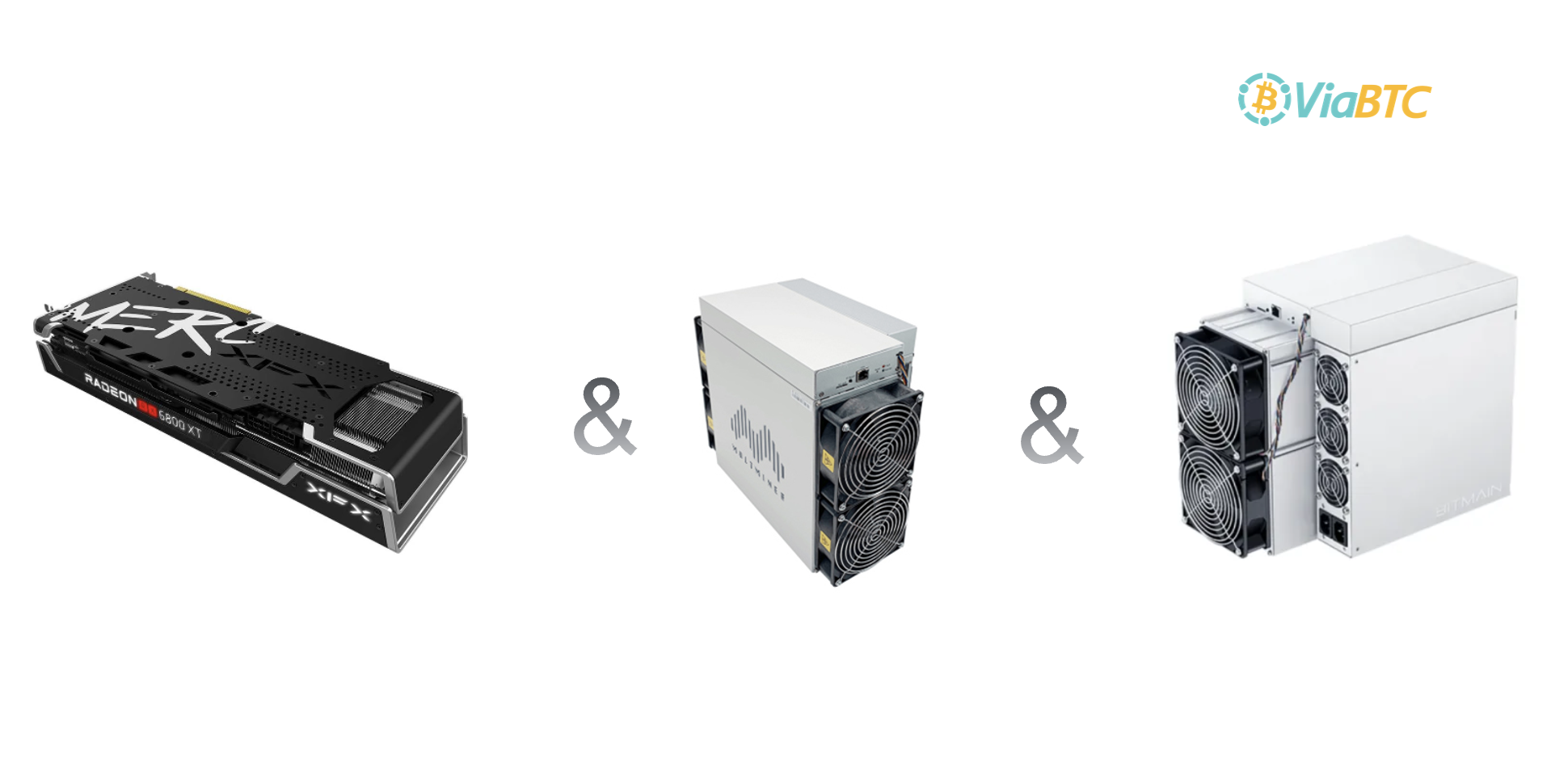As leading mining rig manufacturers like BITMAIN and ICERIVER venture into Kaspa, they have unveiled a new range of more efficient ASIC miners. This surge in hashing power has made GPU mining less lucrative. Although the trajectory from GPU through FPGA to ASIC appears an inevitable course for PoW coins, the mining process now demands higher capital investments with the entry of more powerful ASIC miners. Initial costs are escalating, driving small-scale miners out of business.
According to MinerStat, the KAS hashrate now stands at 13.91 PH/s, equivalent to the combined computing power of 15.95 million NVIDIA RTX 3080 GPUs. Compared to figures in early August, the network’s hashing power has escalated by a staggering 339%, along with a 338% surge in network difficulty, soaring to 3.23M.

Statistics from MinerStat, as of August 1, 2023

Statistics from MinerStat, as of August 24, 2023
Crypto mining is well known to be a race where miners must invest more hashrates to earn greater returns, given that the daily output is limited. How profitable is KAS mining under current conditions? Is it still a viable business for miners?
Assessing KAS Mining Revenue
Let’s start with the profits of three mining rigs: GPU, FPGA, and ASIC.

With a network hashrate at 13.91 PH/s and a block reward of 185 KAS, we would get the following results assuming that electricity costs $0.03 per kWh:
Mining Rig 1: A NVIDIA RTX 3080 GPU working under kHeavyHash, with a rated hashrate of 872 MH/s and a rated power consumption of 318 W.
A single NVIDIA RTX 3080 GPU would generate 872/(13.91×10^9)×(185×24×60×60)=1.002 KAS in one day, with the electricity cost of 0.318*24*0.03=$0.2289
At the current KAS price of $0.04, the daily net profit per RTX 3080 stands at -$0.188. It is clear that following the difficulty surge, KAS mining with common GPUs is no longer profitable.
Mining Rig 2: MultMiner M2 working under kHeavyHash, with a rated hashrate of 8 GH/s and a rated power consumption of 1000 W.
A single MultMiner M2 would generate 8/(13.91×10^6)×(185×24×60×60)=9.193 KAS in one day, with the electricity cost of 1*24*0.03=$0.72
At the market price of $0.04, the daily net profit of MultMiner M2 amounts to -$0.352. By the same token, most FPGA miners struggle to generate positive returns under the present difficulty level.
Mining Rig 3: IceRiver KS0 specifically built for kHeavyHash, with a rated hashrate of 100 GH/s and a rated power consumption of 65 W.
A single IceRiver KS0 would generate 100/(13.91×10^6)×(185×24×60×60)=114.91 KAS in one day, with the electricity cost of 0.065*24*0.03=$0.0468
If the 114.91 coins are sold at $0.04, the daily net profit of IceRiver KS0 will be $4.55. For ASIC miners like IceRiver KS1, KS2, and KS3 that offer larger hashrates, the daily net profit can reach tens or even hundreds of dollars.

The advent of ASIC miners has reshaped KAS mining dynamics. Tailored and optimized for specific mining algorithms, ASIC miners offer superior hashrates and energy efficiency. Thanks to those advantages, ASIC miners have become mainstream mining rigs, gradually replacing GPUs and FPGAs.
ASIC miners, however, are costly. For instance, Antminer KS3, BITMAIN’s most efficient model, is priced at $42,300, and ICERIVER’s IceRiver KS2 and KS3 are sold at over $10,000.
Estimating KAS Mining Payback Period
Payback period can be a misleading metric. First, miners should be aware that estimated payback periods on all sites are based on the current network hashrate, difficulty, and market price. As such, the payback period is often called the static payback period.
Based on the daily net profit calculated above and the mining rig price, we can determine the static payback period of different models:

When purchasing a mining rig, miners must remain prudent and avoid impulsive orders solely considering the current payback period as short as several months. History has provided us with countless instances that prove the importance of timing. In crypto mining, profit isn’t guaranteed at all times or for everyone.
For instance, during the 2017 bull market, BITMAIN’s flagship product Antminer S9 was priced around $1,500. However, its market price surged to over $4,000, attracting a flock of buyers. Based on the BTC price at the time, Antminer S9’s payback period was about 90 days. Yet, within two months, the price plummeted by half, leading to an extended crypto bear throughout 2018 and 2019. This led to massive losses for almost all buyers of Antminer S9.
KAS still looks very promising, and mining rig manufacturers will continue to produce new models. It’s expected that more mining rigs will join the KAS race in the coming months. At the same time, some GPU and FPGA mining rigs may exit from the market due to the lack of profits. As to whether KAS mining remains profitable, miners have to evaluate their own investment goals and risk tolerance. That said, it’s evident that miners with GPU-based operations can no longer profit from KAS mining and could consider switching to alternative GPU-intensive coins.
Disclaimer: The article is for reference only and offers no financial advice.